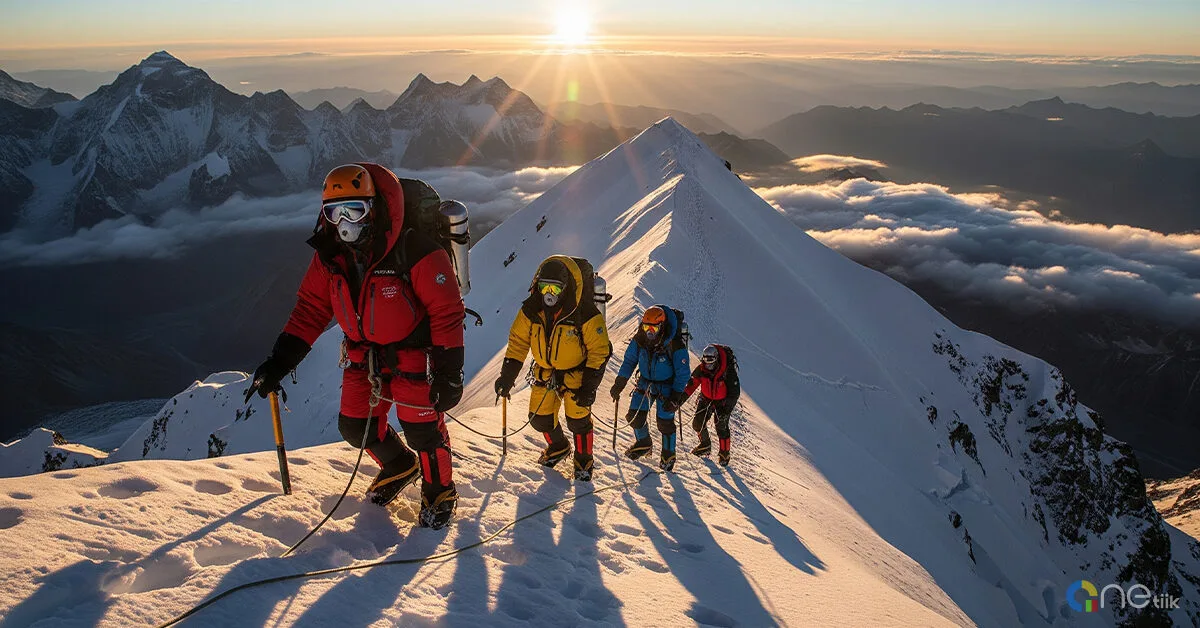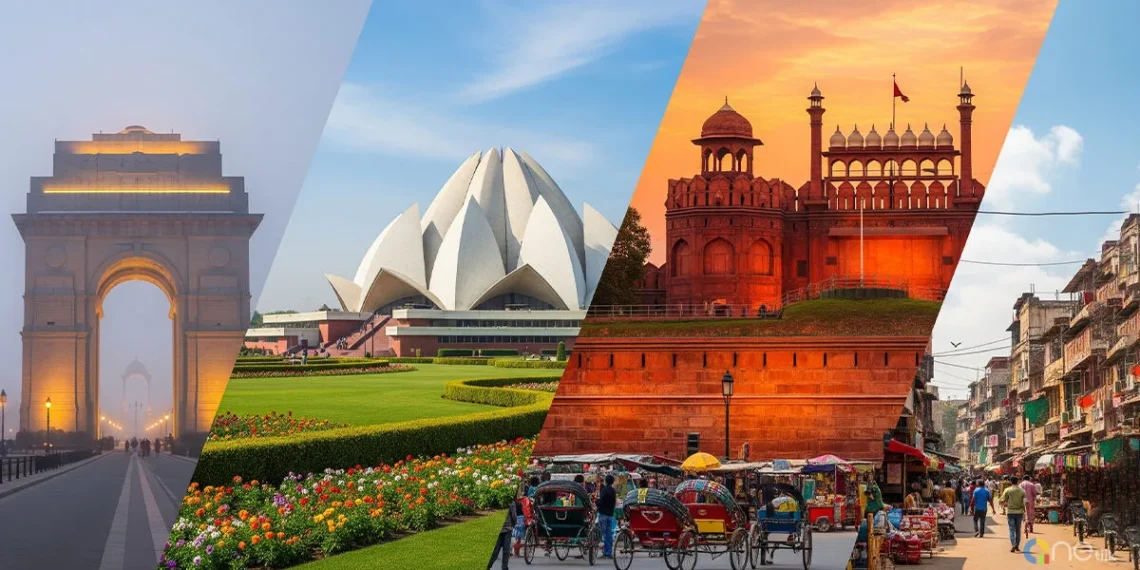Why Everest Takes So Long
Climbers often ask, “How long does it take to climb Mount Everest?” The quick answer, about six to nine weeks, only scratches the surface. In reality, summiting Everest is a carefully choreographed dance of physiology, logistics, and weather. Rush any step, and a dream expedition can quickly become dangerous. Here’s why Everest takes so long and why patience truly pays off.
1. High-Altitude Physiology & Acclimatization
How long it takes to climb Mt Everest safely hinges on your body’s ability to adapt to thinning air. Above 8,000m, the notorious “death zone” has oxygen levels that are less than one-third of those at sea level. Without gradual exposure, climbers risk developing Acute Mountain Sickness (AMS), High-Altitude Pulmonary Edema (HAPE), or High-Altitude Cerebral Edema (HACE), all potentially fatal conditions.
That’s why the average time to climb Everest builds in “climb-high, sleep-low” rotations:
- From Base Camp (5,364 m) up to Camp I (6,065 m) and back
- Then to Camp II (6,400 m), Camp III (7,200 m), and often Camp IV (7,900 m) in similar loops
Each rotation takes 4–7 days, giving your body the red-cell boost it needs and slashing your AMS risk.
2. Weather Windows & Summit Timing
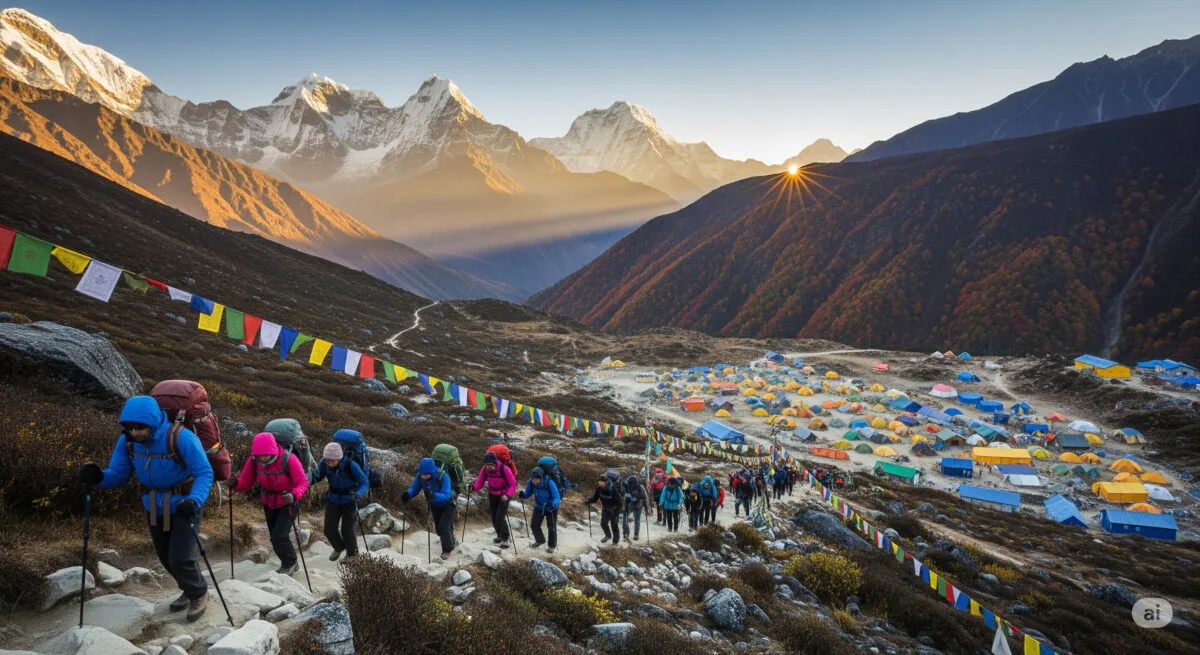
Your time to climb Everest boils down to weather windows. Most teams aim for late May when high-pressure systems can offer a 3–5-day calm. A sudden storm at Camp IV can stall your summit push for days, stretching the climb even longer.
Even during a good window, climbers often wait at Camp IV for the perfect night—when winds dip below 30 km/h. Skip that wait, and how hard it is to climb Mount Everest skyrockets, with frostbite, falls, or altitude sickness waiting in the wings.
3. Logistics, Permits & Route Fixing
Asking how many days it takes to climb Everest isn’t just a question of footsteps. Nepal limits permits, and gathering paperwork, porters, Sherpa support, and oxygen cylinders can eat up weeks before you even step onto the Khumbu.
Once you arrive, Sherpa teams spend 7–10 days “fixing” ropes and ladders across hazards like the Khumbu Icefall. It’s tedious work, but without it, Everest would be far more treacherous.
4. Team Dynamics & Support
“How long will it take to climb Mount Everest?” also depends on your team. A commercial expedition of 30+ clients might stretch to 60 days simply to manage rotations and staggered summit pushes. Smaller, seasoned teams can move more nimbly, but they still honor the same acclimatization schedule.
Your guides and Sherpas shoulder heavy loads, set camps, and carry out rescues. Their pace and decision-making directly shape your Mt Everest climb time.
In summary, the true answer to “How long does it take to climb Mount Everest?” lies in a careful balance of acclimatization, weather watching, and meticulous planning. Skipping any of these steps to shorten the average days to climb Mount Everest not only shortens the timeline—it multiplies the risks. By respecting these essential phases, climbers give themselves the best chance to stand safely atop the world.
How Long Does It Take to Climb Mount Everest?
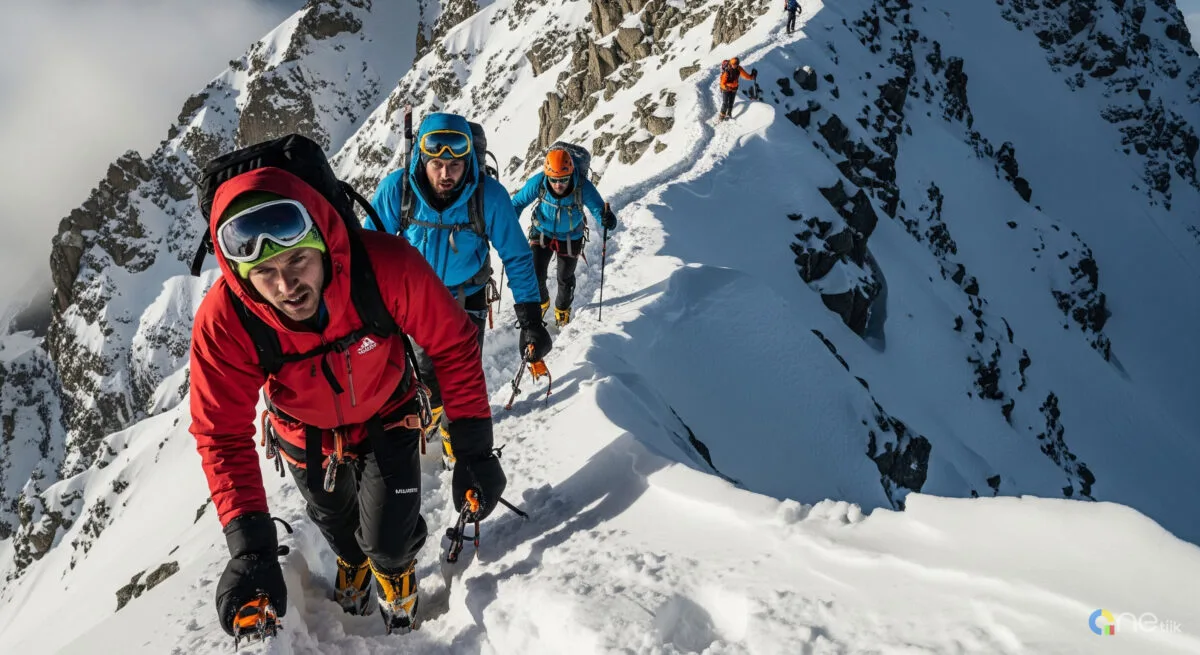
Climbing Mount Everest is a huge adventure and a big commitment. If you’re wondering how long it takes to summit Everest, the answer is that most expeditions last 6 to 9 weeks. Let’s break down what happens during each phase of the climb, so you know how hard it is to climb Mount Everest, the typical Everest climb time, and why it takes so long.
1. Trek to Base Camp (7–10 days)
Before you start the real climb, you trek to Everest Base Camp.
- Most people fly into Lukla and walk through villages like Namche Bazaar, Tengboche, Dingboche, and Lobuche.
- You climb about 500–800 meters each day and take rest days to prevent altitude sickness.
- This trek is important to help your body get used to high altitude. Rushing this part can make the climb much harder and more dangerous later!
2. Acclimatization Rotations (4–6 weeks)
To safely climb Mount Everest, you can’t just go straight up. You need to acclimatize—that means gradually letting your body adjust to less oxygen.
- You do what’s called the climb-high, sleep-low method.
- Most climbers make two or three rotations:
- First rotation: Go from Base Camp to Camp I, then back down.
- Second rotation: Go up to Camp II, maybe Camp III, then return.
- Sometimes, a third rotation to Camp IV.
- Each rotation takes about 4–7 days.
- Why so slow? This careful system helps prevent dangerous altitude sickness like HAPE or HACE.
3. Rest & Wait at Base Camp (7–10 days)
After acclimatization, there’s usually about a week of waiting at Base Camp before the final summit push.
- Teams wait for a good weather window, a few days of safe conditions, often in late May.
- During this time, climbers check gear, get oxygen tanks ready, and prepare for the hardest part.
- Waiting for the right moment is key, because a storm at high altitude can be deadly.
4. The Summit Push (4–7 days)
This is what it all comes down to: the summit push!
- You climb from Camp III up to Camp IV (the “South Col”) in 1–2 days.
- Then, late at night, you start for the top. Climbers want to reach the Everest summit (8,848 meters) by sunrise.
- This last part is through the famous “death zone,” where the air is super thin and every step is exhausting.
- After reaching the summit, you go back down quickly, often to Camp II or even Base Camp in 1–2 days, because staying high is not safe.
Average Time Needed
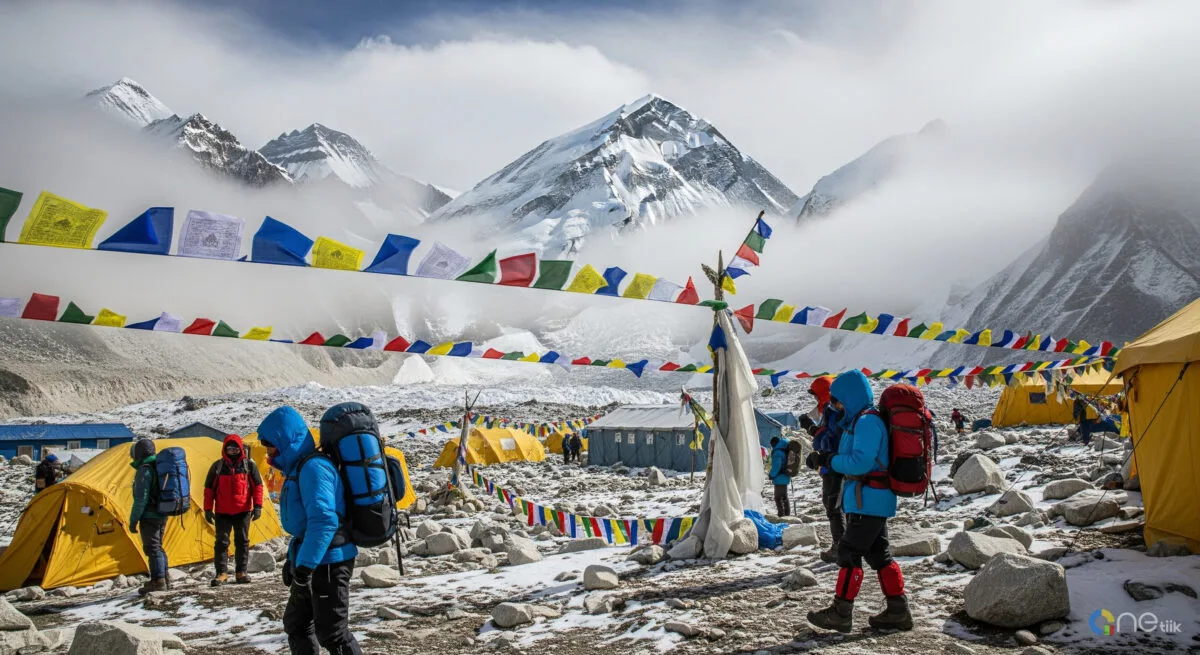
So, how many days does it take to climb Mount Everest?
- Trek to Base Camp: 7–10 days
- Rotations for acclimatization: 4–6 weeks
- Rest and waiting: 7–10 days
- Summit push: 4–7 days
In total, you need about 6 to 9 weeks to climb Mount Everest.
Climbing Everest is extremely hard, not just because it’s high, but because your body needs lots of time to adjust. Following a careful routine makes the climb safer. If you want to know how long it takes to summit Everest or the average days to climb Mount Everest, this guide covers each stage and explains why it all takes so much time.
Total Estimated Timeline:
| Phase of the Climb | Duration (Days) | Approx. Duration (Weeks) |
|---|---|---|
| Trek to Base Camp | 7–10 | 1–1.5 |
| Acclimatization Rotations | 28–42 | 4–6 |
| Rest & Prep at Base Camp | 7–10 | 1–1.5 |
| Summit Push & Descent | 4–7 | 0.5–1 |
| Total Estimated Time | 46–69 days | 6–9 weeks |
In total, most climbers spend 6 to 9 weeks on the mountain, fully reflecting the average time to climb Everest. Skipping steps to shorten this Mt Everest climb time isn’t just risky; it dramatically reduces your chance of a safe summit and return.
Factors That Affect Your Timeline
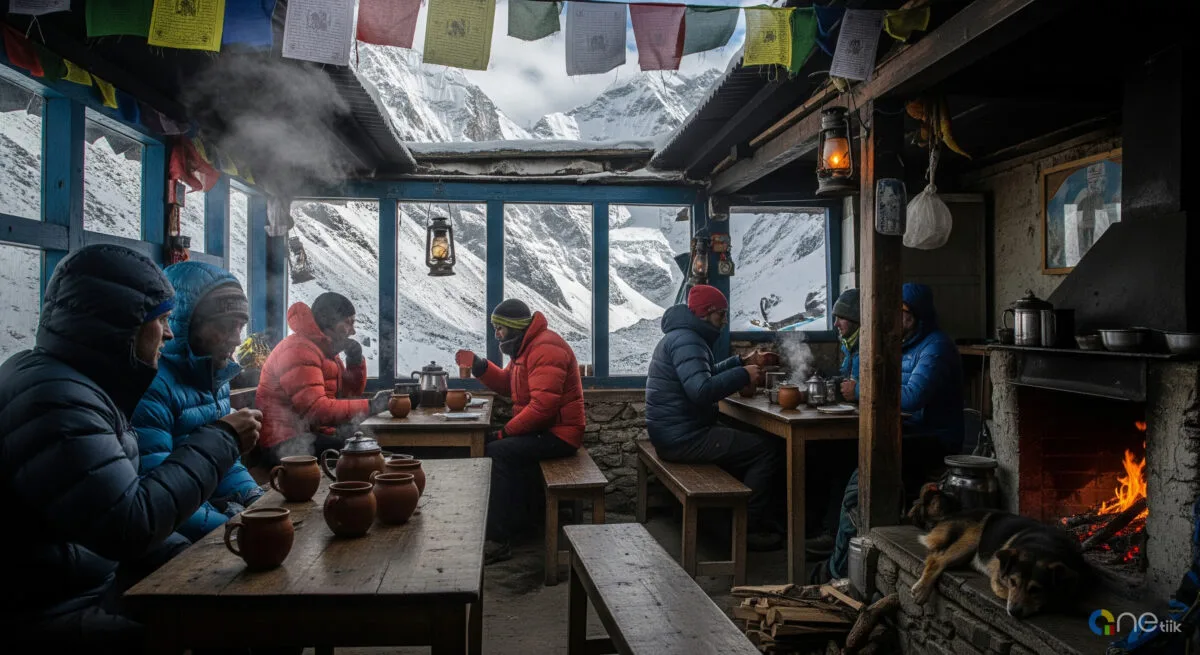
While the average time to climb Mount Everest is 6–9 weeks, individual expeditions can vary widely. Understanding these variables helps answer key questions, such as “How long does it take to climb Mount Everest?” or “How many days to climb Everest?” more precisely. Below are the main factors that can speed up or slow down your journey to the summit:
Physical Fitness & High-Altitude Experience
Your body is your greatest ally on Everest. Climbers who build strong cardiovascular endurance and powerful legs tend to bounce back more quickly after each exhausting rotation. In practice, this means that well-conditioned alpinists can shave several days off the average days to climb Mount Everest, simply because their muscles and lungs cope better with the strain of constant ascent and descent.
Having ticked off 6,000 m-plus peaks before also makes a world of difference. If you’ve already carried heavy packs over high passes, your blood naturally adjusts to thinner air more efficiently. Novices, by contrast, often find themselves adding extra rest days to ward off Acute Mountain Sickness (AMS), stretching their total expedition timeline well beyond the average time to climb Everest.
Weather Delays & Summit Windows
Everest’s summit beckons only during very narrow windows, typically a 3–5-day span in late May, and sometimes another brief period in early October. Even if you’ve completed all your rotations, you may find yourself parked at Camp IV for an additional 7–10 days, simply waiting for clear skies. Every minute of that standby time is essential for answering, “How long will it take to climb Mount Everest safely?”
And it’s not just patience: sudden storms or high winds can force entire teams to descend from higher camps, then slowly re-acclimatize on the way back up. A single weather interruption can tack on a full week or more to your overall schedule, and no climber wants to underestimate Everest’s mood swings.
Team Size & Support Structure
“How long does it take to climb Mount Everest?” also comes down to logistics. Large commercial expeditions, those 20 clients or more, move at a deliberate pace, coordinating multiple rope-fixing rotations and staggered summit pushes. It’s not unusual for these groups to add 5–10 days to the Mt Everest climb time simply because more bodies require more organization.
On the flip side, an expert team of Sherpas and guides can be your secret weapon. When they fix ropes quickly, haul loads efficiently, and set camps with precision, you’ll find yourself crossing crevasses in the Khumbu Icefall faster and shaving precious days off both your acclimatization rotations and that final summit push.
Permit Processing & Route Fixing
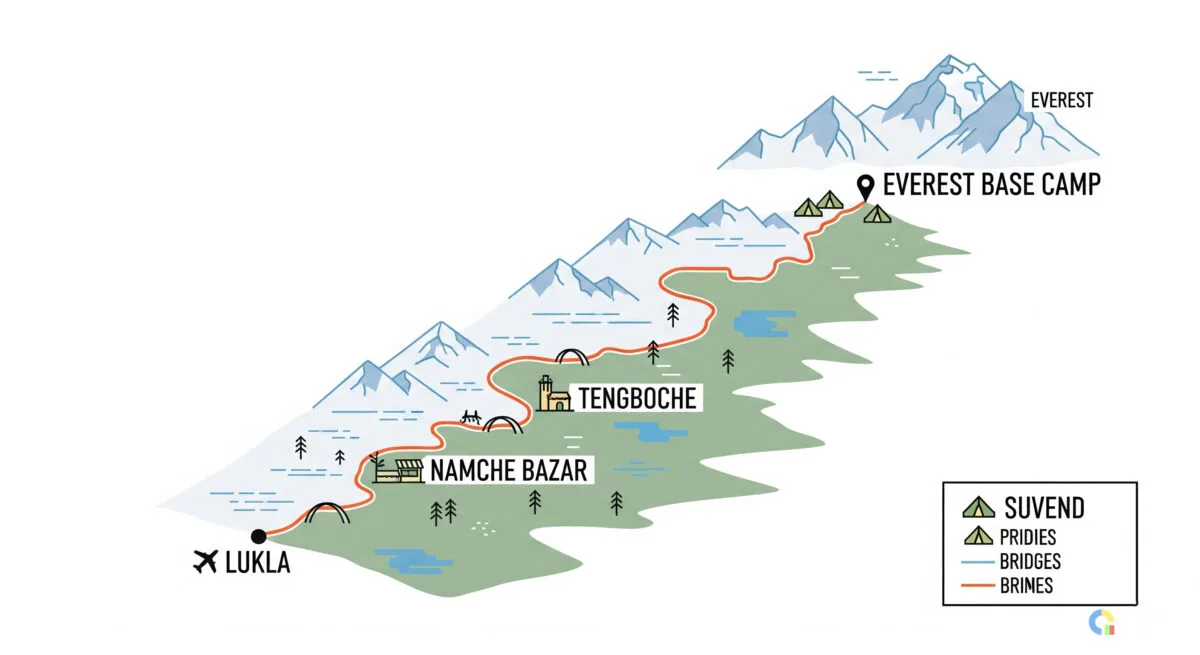
Before you even lace up your boots, there’s paperwork to conquer. Securing your Nepal climbing permit, arranging liaison officers, and shipping tons of gear to Base Camp can easily eat up 2–4 weeks of your calendar. Any delay in Kathmandu, from bureaucratic backlogs to customs holdups, pushes your trek start back and ripples through your entire expedition plan.
Once you arrive, Sherpa teams spend another 7–10 days “fixing” the route: stringing rope across yawning crevasses, installing ladders, and establishing Camps I through IV. It’s painstaking, critical work—and another chunk of time you’ll need to factor into how many days it takes to climb Everest.
Individual Health & On-Mountain Injuries
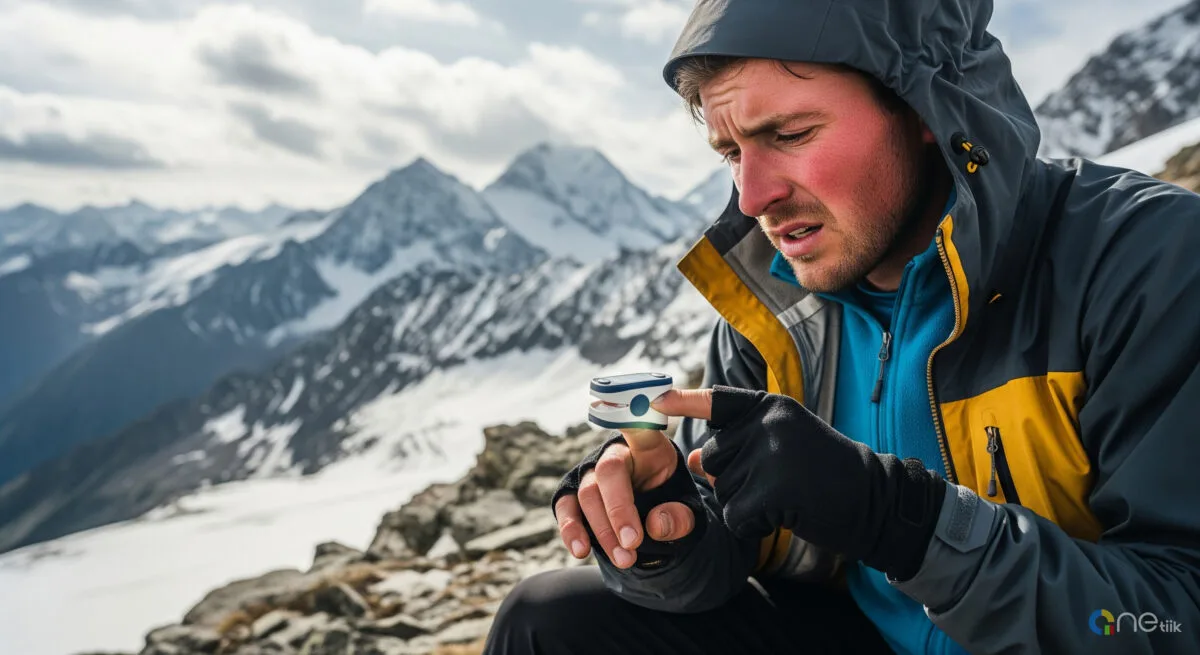
No matter how well you plan, your body can still surprise you. If a team member develops moderate to severe AMS, HAPE, or HACE, the group must descend them to lower ground, pause rotations, and then re-acclimatize—sometimes adding up to 14 days of recovery time.
Minor injuries, too, can throw off your rhythm. A twisted ankle, frostbitten toes, or a broken crampon often means a trip back to Base Camp for medical attention or evacuation. That downtime alone can tack on another week or more, reminding every climber that prioritizing safety over speed isn’t just good advice—it’s what keeps you alive above 8,000 m.SEO-friendly advice; it’s what keeps climbers alive above 8,000 m.
“Fastest” vs. “Average” Climbs: What the Data Says
When you search “how long does it take to climb Mount Everest,” you’ll find two very different answers depending on whether you’re looking at record-breaking (fastest) ascents or the average expedition timeline. Here’s a clear comparison:
| Type of Climb | Typical Duration | Key Examples & Data |
|---|---|---|
| Average Expedition | 6–9 weeks (≈46–69 days) | • Most commercial guiding companies plan 52–60 days, including trek-in, acclimatization rotations, and summit push. |
| Fastest Round-Trip | 10–12 hours | • Lakpa Gelu Sherpa holds a record 10 h 56 m round-trip from Base Camp to the summit and back. |
| Rapid Summit-Only | 26–36 hours | • Pemba Dorje Sherpa reached the summit from Base Camp in 26 h 45 m. |
| Veteran Speed Attempts | 2–4 days (summit push only) | • Some elite climbers ascend Camp IV to summit and back within 48–72 h, but still require full rotations beforehand. |
- Average Time to Climb Everest (46–69 days)
- The bulk of an expedition is spent on acclimatization rotations between Base Camp and Camps I–III, ensuring climbers adapt safely to high altitudes.
- This timeline, often advertised as “6–9 weeks,” reflects both the average time to climb Mount Everest and the built-in standby periods for weather windows.
- Fastest Climbs (10–36 hours)
- Elite Sherpas, acclimated to living at high altitude, can blitz from Base Camp to the summit in under 12 hours.
- Their speed runs omit most rest days and rely on years of experience, exceptional physiology, and perfect weather.
- Summit-Push-Focused Speed (2–4 days)
- Some record seekers focus on the final push: after completing their rotations, they sleep at Camp IV and then summit and descend in as little as 48 hours.
- Although the “summit-only” clock starts late in the expedition, these efforts highlight how “how long does it take to summit Everest” can be vastly shorter than the full expedition length.
Key Takeaway:
- If you’re planning your climb, treat “how long does it take to climb Everest?” as 6–9 weeks—that’s the average time to climb Mount Everest with proper acclimatization and safety buffers.
- Record-breaking feats are extraordinary outliers, not realistic models for typical climbers. Patience and systematic rotations are the true path to a successful, safe summit.
Expert Insights & Real-Life Stories
“On Everest, patience wins over power. Too often climbers push their bodies past safe limits, only to pay the price with altitude sickness or delays.”
— Kami Rita Sherpa, IFMGA-certified mountain guide and record-holder for the most Everest summits
“Climbing Everest isn’t about how many days to climb Everest—it’s about knowing when to rest. Your body needs time more than you need speed.”
— Dr. Ayesha Singh, expedition physician with the Himalayan Rescue Association
Real Climber Anecdotes
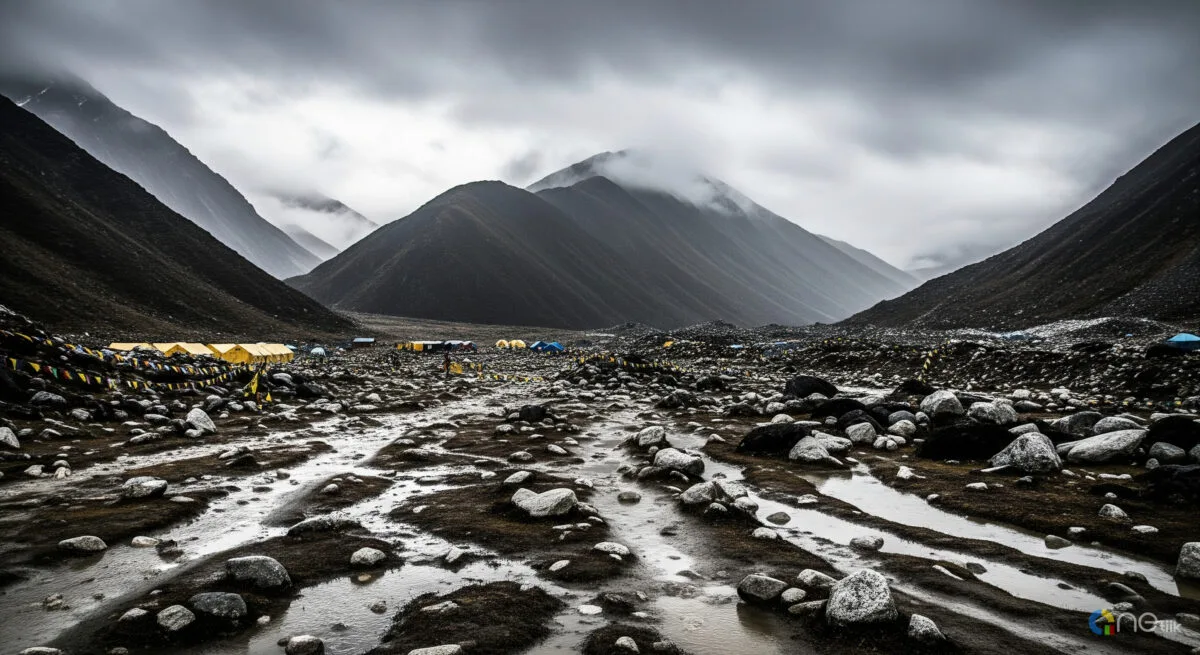
- A Tale of Weather Delays (56 Days Total)
- Climber: James Patel, experienced alpinist from the U.K.
- Plan: James expected the average time to climb Mount Everest to be roughly 50 days.
- Reality: A series of high-altitude storms at Camp IV forced three extra rotations back to Base Camp. His expedition stretched to 56 days. He says, “I learned that even the best plans bend to the mountain’s will.”
- Success via Strict Acclimatization (48 Days Total)
- Climber: Mei Ling, one of the first female climbers from Taiwan to summit without supplemental oxygen on her final push.
- Approach: Mei completed three full rotations between Camps I–III, never skipping a rest day despite pressure to hurry.
- Outcome: She reached the summit on Day 48, within the 6–9 weeks window, crediting her success to “listening to my body rather than my ego.”
- Rushed Summit Push Gone Wrong (Retreated on Day 40)
- Climber: Carlos Rojas, an ambitious mountaineer aiming to set a speed record for how long it takes to climb Mount Everest.
- Mistake: Skipped his third acclimatization rotation to fit a narrow weather window.
- Consequence: Developed severe AMS at Camp III and had to descend immediately. He reflects, “I thought faster meant better—but I learned that every minute saved on acclimatization can cost you days in recovery.”
Key Takeaways from the Experts & Stories:
- Even elite guides stress that patience over rushing your body’s adaptation is non-negotiable.
- Weather is unpredictable; expect delays and build buffer days into your plan.
- Real expeditions often run beyond the average days to climb Everest, reinforcing why the typical timeline is 6–9 weeks.
By learning from guides like Kami Rita Sherpa and climbers’ firsthand accounts, you’ll know how long it takes to climb Mount Everest. isn’t just a number—it’s a lesson in respecting the mountain’s pace.
Conclusion
Summiting Everest is less a sprint and more a test of endurance, planning, and patience. While headlines may dazzle with sub-24-hour ascents, the average expedition spans 6–9 weeks, driven by essential acclimatization rotations and weather waits. If you’re dreaming of standing atop the world’s highest peak, focus first on a thorough training plan, then embrace the slow, steady rhythm that will carry you safely to 8,848 m.
FAQs
What is the best time to visit Mount Everest?
The best time to visit Mount Everest is during spring (April–May) and autumn (September–October) when the skies are clear, temperatures are manageable, and mountain views are breathtaking.
Do I need a permit to trek to Everest Base Camp?
Yes. You’ll need the Sagarmatha National Park Permit and a TIMS (Trekkers’ Information Management System) card. If you’re trekking from Jiri, you may also need a Gaurishankar Conservation Area Permit.
Can beginners climb or trek near Everest?
Yes, beginners can trek to Everest Base Camp (EBC) with some basic physical preparation. However, climbing Mount Everest itself is extremely difficult and only suited for highly experienced mountaineers.
How much does it cost to trek to Everest Base Camp?
On average, it costs $1200 to $3000 per person, depending on your itinerary, guide/porter services, permits, and accommodations.
Is internet and phone signal available on the trek?
Yes, most tea houses offer paid Wi-Fi. You can also get a local SIM card (Ncell or NTC) that works in several areas of the trek, but signal strength is unreliable at higher altitudes.
How do I prepare for altitude sickness?
Take acclimatization days seriously, ascend gradually, stay hydrated, and avoid alcohol. Consider carrying Diamox (consult your doctor). Learn to identify early symptoms like headaches, nausea, and dizziness.
What’s the weather like at Everest Base Camp?
It’s cold year-round. In spring and autumn, daytime temps range from 0°C to 15°C, while nights drop to -10°C or lower. Winters are extremely harsh with heavy snowfall and sub-zero temperatures.
Are there ATMs or card payment options on the trek?
There are no ATMs after Namche Bazaar, and card payments are rare. Carry enough Nepali rupees in cash, especially for higher altitudes.
Can I trek solo to Everest Base Camp?
Yes, solo trekking is allowed. However, it’s safer and more enriching to trek with a local guide or in a small group.
Do I need travel insurance for the Everest trek?
Absolutely. You should get travel insurance that covers high-altitude trekking (up to 6000m) and emergency helicopter evacuation in case of sickness or accidents.
Useful External Links for Mount Everest Travelers.
| Purpose | Link | Description |
|---|---|---|
| Live Weather at Everest Base Camp | Mountain-Forecast – Everest Base Camp | Provides 3-day weather forecasts with temperature, wind, and precipitation data at various elevations. |
| Nepal Department of Tourism (Permits) | tourismdepartment.gov.np | Official site for trekking permits (like TIMS and Sagarmatha National Park Entry). |
| Trekking Agencies’ Association of Nepal (TAAN) | taan.org.np | Information on registered trekking agencies and safety guidelines. |
| Flight Status to Lukla Airport | FlightRadar24 – Lukla Airport | Real-time flight status to/from Lukla (gateway to Everest region). |
| Altitude Sickness & Health Advisory | Altitude.org | Detailed guide to altitude sickness prevention and symptoms. |
| Everest Trek Maps | Himalayan Map House | Purchase or download topographical maps for the Everest region. |
| Everest Base Camp Trek Preparation Guide | The Trek | Community-based blog with stories, packing lists, and real trekker experiences. |
| Travel Vaccines and Health Info (Nepal) | CDC – Traveler’s Health (Nepal) | Official CDC guide for vaccinations, health precautions, and travel health risks. |

